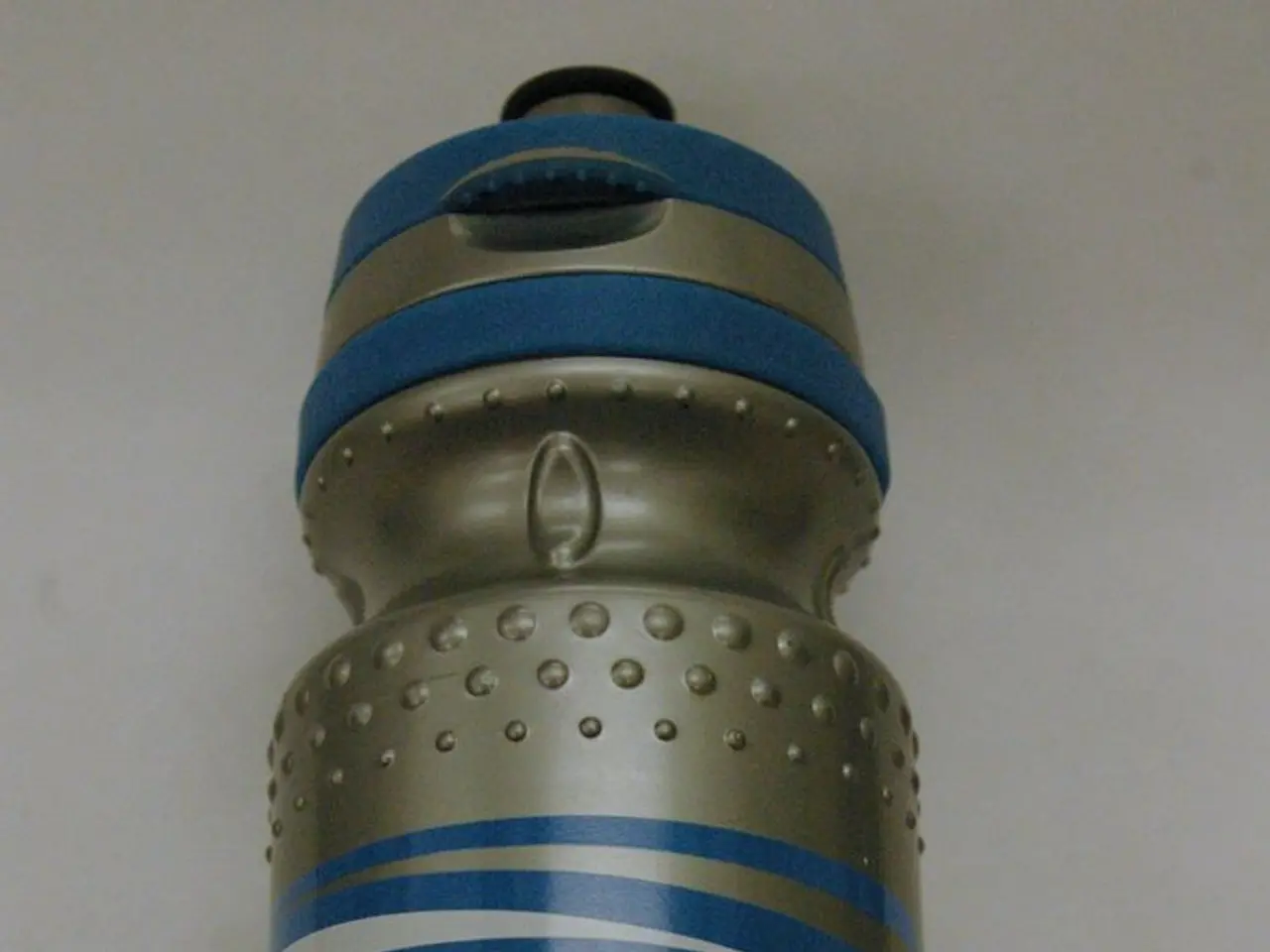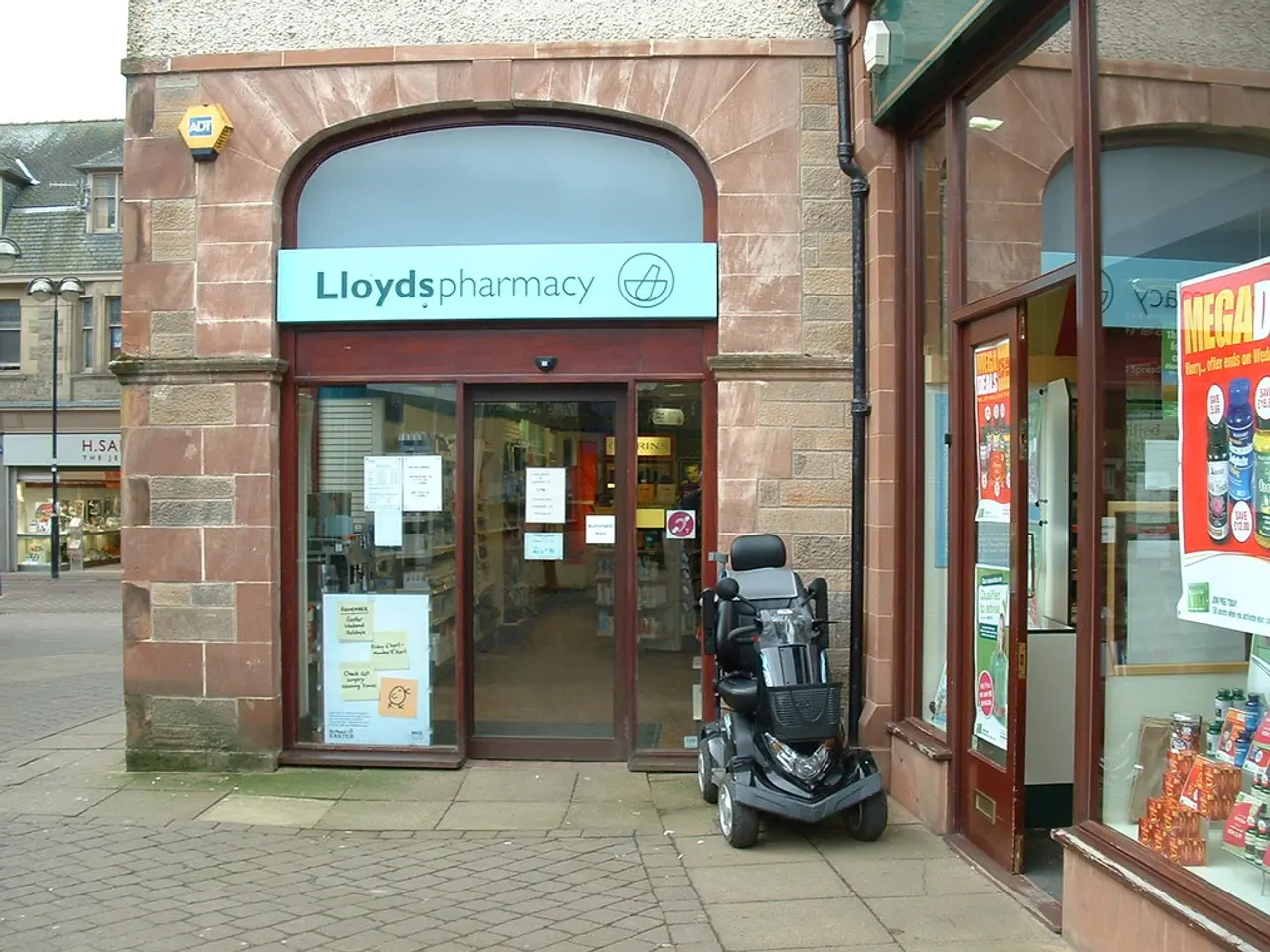Lung Cancer Treatment Options: Distinguishing Various Therapies and Their Related Adverse Effects
Advanced Non-Small Cell Lung Cancer (NSCLC): Targeted Therapies and Their Side Effects
In the ongoing battle against lung cancer, targeted therapies have become a beacon of hope for patients with advanced-stage NSCLC. These treatments, which differ from standard chemotherapy, focus on blocking specific molecules that contribute to cancer growth and spread. Here's a look at some of the FDA-approved targeted therapies for advanced NSCLC, along with their common side effects.
FDA-Approved Targeted Therapies for Advanced NSCLC
- Datroway (datopotamab deruxtecan): This drug, approved in mid-2025, targets TROP2 and is used for adults with locally advanced or metastatic NSCLC harboring EGFR mutations after progression on EGFR-targeted therapies and platinum chemotherapy. Common side effects include gastrointestinal toxicities, cytopenias, fatigue, and potential risk of interstitial lung disease/pneumonitis.
- Osimertinib: A third-generation EGFR tyrosine kinase inhibitor (TKI), osimertinib is widely used for EGFR-mutant NSCLC, particularly effective as a first-line treatment and in neoadjuvant settings to improve outcomes. Common side effects include rash, diarrhea, dry skin, nail toxicity, and potential cardiotoxicity (QT prolongation, heart failure), as well as interstitial lung disease (rare but serious).
- Savolitinib plus osimertinib: This combination is effective in patients with EGFR-mutant advanced NSCLC who develop MET amplification as a resistance mechanism to first-line EGFR TKIs, improving response and progression-free survival compared to chemotherapy. As a MET inhibitor, savolitinib may cause edema, nausea, vomiting, increased liver enzymes, and fatigue.
- Alectinib: A second-generation ALK inhibitor, alectinib is favored for ALK-positive NSCLC due to its potent CNS penetration and manageable side-effect profile. Common side effects include fatigue, constipation, edema, myalgia, and liver function abnormalities.
Additional Targeted Therapies
- Larotrectinib (Vitrakvi) and entrectinib (Rozlytrek): These medications are prescribed for the NTRK gene mutation in people with advanced lung cancer.
- Dabrafenib (Tafinlar) and Trametinib (Mekinist): These are the two targeted medications doctors use to treat lung cancer with a BRAF mutation, which affects approximately 4% of NSCLC patients.
- Angiogenesis inhibitors, like bevacizumab (Avastin) or ramucirumab (Cyramza), target tumor blood vessel growth and can slow or stop the growth of lung cancer.
- Amivantamab (Rybrevant): This medication is for a rarer EGFR mutation known as Exon 20, which does not respond to many medications.
Emerging Targeted Therapies
- DB-1310: This HER3-targeting antibody-drug conjugate has received FDA Fast Track status for refractory NSCLC with EGFR mutations after failure of third-generation EGFR TKI and platinum chemotherapy.
Common Side Effects of Targeted Therapies
While the specific side effects can vary depending on the targeted therapy, some common side effects include fatigue, high blood pressure, diarrhea, pain, swelling, tingling, numbness, hair changes, protein in the urine, an increased risk of infections, biochemical hypothyroidism, appetite suppression, diarrhea, skin problems, skin rash, mouth sores, vision changes, fatigue, nausea and vomiting, diarrhea, heart rhythm problems, liver or nerve damage, swelling in the lungs or elsewhere in the body, and more severe side effects like holes in the gastrointestinal tract, severe bleeding, slow wound healing, heart failure, stroke or heart attack, reversible posterior leukoencephalopathy syndrome, and others.
It's essential for individuals to discuss their treatment options with their doctor to determine the best targeted therapy for their specific situation.
Note: This list reflects the most current FDA approvals and data available as of July 2025. Emerging therapies like DB-1310 have Fast Track status but are not yet FDA-approved.
References: [1] Datroway (datopotamab deruxtecan) Prescribing Information [2] Osimertinib Prescribing Information [3] Savolitinib Prescribing Information [4] Alectinib Prescribing Information [5] DB-1310 Prescribing Information (not yet available)
- Advanced Non-Small Cell Lung Cancer (NSCLC) patients are now benefiting from targeted therapies that offer hope in their fight against the disease.
- These treatments aim to block specific molecules responsible for cancer growth and spread, setting them apart from conventional chemotherapy.
- Datroway, approved mid-2025, targets TROP2 and is used for adults with advanced NSCLC harboring EGFR mutations.
- Gastrointestinal toxicities, cytopenias, fatigue, and interstitial lung disease/pneumonitis are common side effects with Datroway.
- Osimertinib is a third-generation EGFR tyrosine kinase inhibitor (TKI) widely used for EGFR-mutant NSCLC.
- Rash, diarrhea, dry skin, nail toxicity, and potential cardiotoxicity (QT prolongation, heart failure), as well as interstitial lung disease are common side effects of Osimertinib.
- The combination of savolitinib plus osimertinib improves response and progression-free survival in patients with EGFR-mutant advanced NSCLC.
- Savolitinib may cause side effects like edema, nausea, vomiting, increased liver enzymes, and fatigue.
- Alectinib, a second-generation ALK inhibitor, is favored for ALK-positive NSCLC due to its potent CNS penetration and manageable side-effect profile.
- Fatigue, constipation, edema, myalgia, and liver function abnormalities are common side effects of alectinib.
- Larotrectinib and entrectinib are prescribed for the NTRK gene mutation in people with advanced lung cancer.
- Dabrafenib and Trametinib are used to treat lung cancer with a BRAF mutation.
- Angiogenesis inhibitors like bevacizumab or ramucirumab target tumor blood vessel growth and can slow or stop the growth of lung cancer.
- Amivantamab is for a rarer EGFR mutation known as Exon 20, which does not respond to many medications.
- DB-1310, an HER3-targeting antibody-drug conjugate, has received FDA Fast Track status for refractory NSCLC with EGFR mutations.
- Some common side effects of targeted therapies include fatigue, high blood pressure, diarrhea, pain, swelling, tingling, numbness, hair changes, protein in the urine, an increased risk of infections, biochemical hypothyroidism, appetite suppression, and diarrhea.
- Skin problems, skin rash, mouth sores, vision changes, fatigue, nausea and vomiting, diarrhea, heart rhythm problems, liver or nerve damage, swelling in the lungs or elsewhere in the body can also be side effects.
- More severe side effects like holes in the gastrointestinal tract, severe bleeding, slow wound healing, heart failure, stroke or heart attack, reversible posterior leukoencephalopathy syndrome, and others may also occur.
- It is crucial for individuals to discuss their treatment options with their doctor to determine the best targeted therapy for their specific situation.
- As of July 2025, this list reflects the most current FDA approvals and data.
- Emerging therapies like DB-1310 have Fast Track status but are not yet FDA-approved.
- The ongoing battle against lung cancer involves dedicated scientific and medical research to develop new treatment options.
- Science continues to uncover causes and potential treatments for various chronic diseases and medical-conditions.
- In the realm of science, research in environmental-science plays a key role in understanding climate-change impacts on human health-and-wellness.
- Fitness-and-exercise, proper diet, and nutrition are crucial in preventing chronic diseases like cancer.
- The manufacturing industry aims to reduce its carbon footprint and adopt sustainable practices in response to climate-change concerns.
- Mental-health is an essential aspect of overall health, and the industry continues to develop new treatments for neurological-disorders.
- Eye-health, hearing, and skin-care are vital components of personal health, with various products catering to these needs in the retail sector.
- The industry's focus on innovation extends to industries like the energy sector, with a push towards sustainable and renewable energy sources.
- Personal-finance, banking-and-insurance, and mortgage-and-loans are key aspects of business, affecting daily lifestyle choices.
- The finance sector is an essential component of the general economy, with investments in stocks, bonds, and real estate shaping the retail landscape.
- The entertainment industry encompasses a variety of sectors like movies-and-tv, music, pop-culture, sci-fi-and-fantasy, general-news, crime-and-justice, and casino-and-gambling, captivating millions worldwide.




